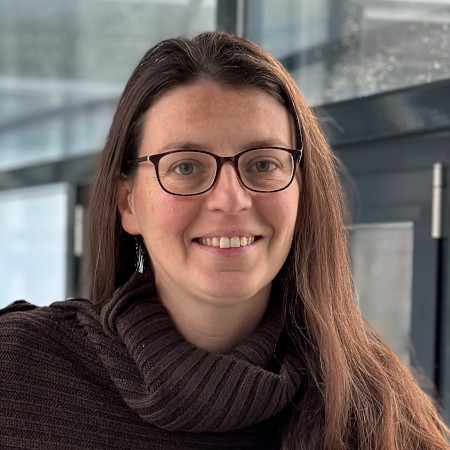“Nature has always been an impetus for technical developments”
Silvia Vignolini
Ph.D. physicist
Position:
Director of Max Planck Institute of Colloids and Interfaces (MPICI) in Potsdam Golm and Head of Department „Sustainable and Bio-inspired Materials”

Ph.D. physicist
Position:
Director of Max Planck Institute of Colloids and Interfaces (MPICI) in Potsdam Golm and Head of Department „Sustainable and Bio-inspired Materials”

As director of the newly established Department of „Sustainable and Bio-inspired Materials“ at the MPIKG, Silvia Vignolini aims to research and develop materials with predominantly optical functions, following Nature`s example.
Nature has always been a driving force for technical developments. Also Silvia Vignolini draws inspiration from Nature in her research work. At the Max Planck Institute of Colloids and Interfaces (MPIKG) in Potsdam-Golm, the top physicist took over at the beginning of the year as Head of a newly established Department that focuses on the development of sustainable and bio-inspired materials. Her goal: artificial materials should be indistinguishable from natural materials. To achieve this, the researcher dives deep into the details of strategies that Nature uses to structure materials. One focus of her work is researching and developing optical functions such as coloration in plants. Initial successes have already been achieved.
What is your research approach and what is special about it?
We aim to develop materials inspired by Nature using sustainable resources as much as possible. I think what makes our research successful is that we are not scared to cross boundaries between disciplines and collaborate intensely with scientists from different backgrounds. We dive deep into the details of strategies used by Nature on how to structure materials. Once we understand these principles it is relatively easy to come up with ideas on how to mimic performances.
You want to research and develop new materials with predominantly optical functions based on Nature's example. What does that mean in concrete terms? And what optical functions from Nature do you use as a model?
A successful example is the work we have done on plants. Several plants can make colours without pigment but by structuring cellulose in the cell wall in an architecture that is called helicoid. Such chiral architecture is similar to the one of a helical staircase where all the cellulose dimers in one layer (the steps of the staircase) are oriented in one direction while the one above or below are also aligned but tilted. We developed ways to reproduce these structures using cellulose itself and were able to produce coloured powder. Now, we have commercialised this powder as a pigment and glitter. It can be used to replace more polluting ones that are commercially available.
How can these natural functions be transferred to new materials?
That differs from case to case. Nature has developed a huge variety of strategies. One challenge is to pick the ones that can be successfully implemented in real world applications.
To what extent could this also make materials more sustainable?
As scientists, we are working at the very start of an innovation, we can only partially contribute to the process of making materials sustainable. Therefore, we engage with companies and politicians to identify best practices and also with life cycle analysis experts that help us to look at the bigger picture of material manufacturing. We urgently need to find solutions to make materials more sustainable by using resources consciously and by making sure we start with renewable and abundant materials. However, I believe that it is important to remember that resources are not infinite.
Since January 1, you have been director at the MPIKG and Head of the newly founded Department „Sustainable and Bioinspired Materials“. What are you currently researching?
We are slowly shifting our attention away from land plants to algae. We want to better understand how these organisms quickly adapt to different environments and environmental pressures.
What would you like to achieve?
I hope that we will develop new strategies to make new artificial materials that are indistinguishable from natural ones and integrate them into the life cycle of the planet without destroying the existing one.
Interview: Beatrix Boldt


